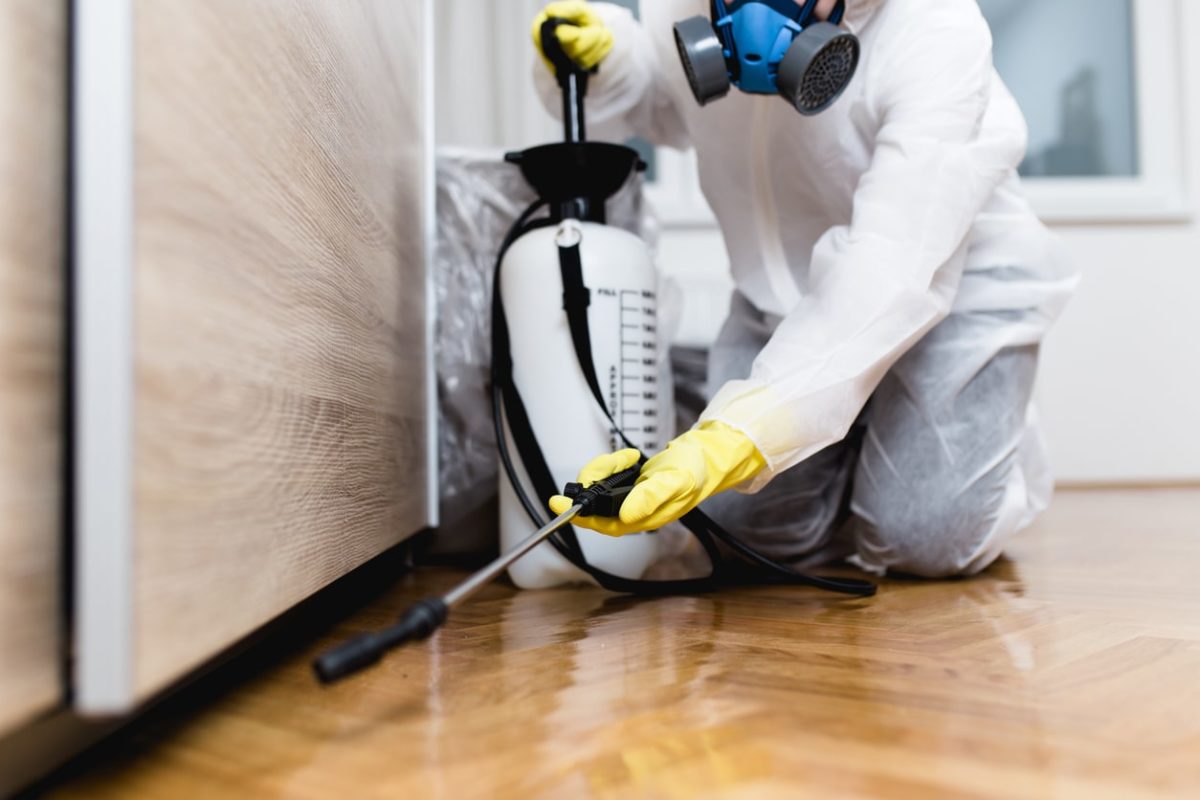Remove pests with the best Pest Control in your area.
Eco-Friendly Pest Control Approaches for Handling Wildlife in Urban Locations
Urban locations commonly locate themselves at the junction of human task and wild animals, causing unique difficulties in pest administration. Green methods highlight sustainable conjunction, employing methods such as habitat alteration and all-natural repellents to minimize human-wildlife conflicts. These strategies not only shield the atmosphere yet additionally enhance neighborhood engagement in wild animals monitoring. As urban populaces remain to expand, recognizing the characteristics of wild animals interactions becomes increasingly important. What ingenious methods can be carried out to make sure both eco-friendly equilibrium and urban safety and security? Exploring this question exposes a compelling landscape of prospective remedies.
Understanding Urban Wild Animals Characteristics
Understanding Urban Wildlife Dynamics is crucial for creating efficient and green pest control approaches. Urban areas are progressively becoming environments for different wildlife varieties, driven by aspects such as environment fragmentation, food schedule, and human advancement. Recognizing these dynamics enables a nuanced technique to pest management that lines up with environmental concepts.
Urban wild animals commonly includes types such as raccoons, squirrels, and birds, which adapt to city atmospheres, locating specific niches in eco-friendly rooms, parks, and even houses. Their visibility can result in disputes with human beings, especially when they manipulate human resources for food and sanctuary. Comprehending the habits and environmental roles of these varieties informs techniques that decrease adverse interactions while advertising biodiversity.
In addition, acknowledging the interdependencies within urban environments helps in recognizing critical locations for environment conservation and repair. This understanding adds to the development of incorporated insect administration (IPM) techniques that take into consideration the environmental equilibrium, consequently lowering reliance on hazardous chemicals. By promoting coexistence in between humans and metropolitan wildlife, cities can develop much healthier settings that benefit both residents and regional environments, leading the way for lasting urban living.
Natural Repellents and Deterrents
Natural repellents and deterrents use a lasting option to standard pest control techniques by harnessing the power of nature to keep undesirable species at bay. These environment-friendly solutions generally make use of plant-based components, crucial oils, and various other normally happening compounds that hinder insects without hurting the environment.
One reliable natural repellent is peppermint oil, which is recognized to fend off rodents and insects. Its strong fragrance is undesirable to many pests, making it a popular choice for metropolitan settings. Vinegar and citrus peels can offer as deterrents, as their strong smells are commonly unattractive to different wild animals.
In addition, diatomaceous earth is an all-natural powder that can be spread in areas vulnerable to parasite activity, successfully dehydrating and deterring pests without posturing dangers to non-target varieties. Garlic sprays and neem oil are acknowledged for their capability to drive away a broad variety of parasites, including both insects and larger wildlife.
Executing these all-natural repellents not just minimizes reliance on chemical pesticides but also advertises a healthier metropolitan community, promoting a more well balanced conjunction between humans and wild animals. By utilizing these strategies, metropolitan areas can effectively manage parasite populaces while lessening ecological influence.
Habitat Alteration Techniques
Efficient habitat modification techniques play an important duty in sustainable parasite administration by modifying the atmosphere to make it less helpful to pest invasions. By comprehending the ecological characteristics of urban areas, homeowner can carry out tactical alterations that hinder bugs while advertising biodiversity.
(Exclusion Pest Control)One main method entails keeping proper sanitation. This consists of routine waste elimination, safeguarding trash bins, and removing standing water to minimize reproducing websites for bugs and rodents. Additionally, landscaping techniques such as selecting indigenous plants can boost environmental equilibrium, supplying environments for beneficial organisms while decreasing resources for pests.
Another vital method is to seal access points in structures. Checking and repairing cracks in foundations, walls, and windows can substantially minimize bug access. Furthermore, producing physical obstacles, such as fencings or plant barriers, can hinder wildlife motion into human-inhabited areas.
Integrated Parasite Management Practices
Building upon habitat modification methods, integrated parasite management (IPM) practices use an alternative strategy to controlling pest populations while reducing environmental influence. IPM integrates numerous methods, consisting of organic, social, mechanical, and chemical controls, to attain effective parasite management.
Organic control involves the intro of all-natural predators or bloodsuckers to lower insect populations. Social methods, such as crop rotation and sanitation, disrupt pest life cycles and lessen their environments - Pest control service. Mechanical controls, like traps and barriers, provide immediate remedy for pest pressures without chemical intervention
Chemical controls are made use of as a last option, concentrating on targeted applications that restrict harm to non-target varieties and the atmosphere. The choice of environmentally friendly pesticides, when needed, is important to the IPM framework. Additionally, checking parasite populaces and examining possible damage aids inform decision-making, making certain that treatments are prompt and reliable.
Area Involvement and Education And Learning

(Fire ant control Port Charlotte)Workshops and educational sessions can gear up locals with knowledge regarding native varieties, habitat preservation, and effective non-toxic bug management methods. Collaboration with institutions, local organizations, and federal government firms additionally enhances academic outreach, making sure that vital information reaches diverse target markets.
Moreover, community-led initiatives, such as community clean-up days and environment reconstruction projects, not just advertise biodiversity however also enhance area connections. Pest Control. By urging residents to share their experiences and observations, areas can establish targeted techniques that address details local bug problems
Including responses from residents right into parasite management intends enables an extra responsive and adaptive strategy to wildlife challenges. Ultimately, educated and involved communities are vital to accomplishing long-term success in green bug control, resulting in much healthier urban settings that respect both human visit this site and ecological requirements.

Final Thought
In conclusion, green insect control comes close to offer lasting options for taking care of metropolitan wildlife. By focusing on environment modification, using natural repellents, and applying integrated insect management methods, areas can foster a harmonious conjunction with neighborhood fauna.